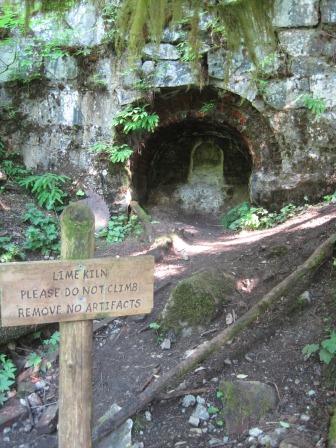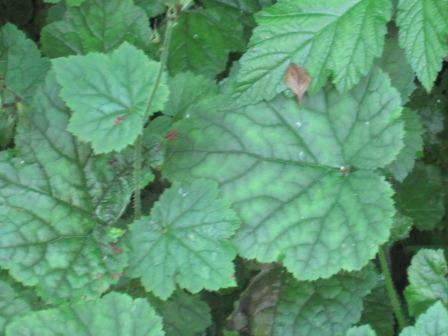

Today my family took our annual 4th of July weekend hike. We ended up on a fairly new trail through the Robe Canyon Historic Park. It was a gorgeous day and we saw all manner of plants and animals. The highlight of this trail is an old lime kiln; bricks and other remnants of early settlers are scattered around the area. The kiln closed in the 1930’s. (The hot link embedded in the park name leads to a 2004 article about the trail and the history of the site.)

Ever on the lookout for interesting plants or plant problems, I found many of our native species with definite signs of interveinal chlorosis. This is indicative of a foliar deficiency of iron or manganese. These forest soils are rarely deficient in either nutrient, and they also tend to be acidic (meaning that it’s easy to take up iron and managanese; alkaline soils inhibit uptake).

So why are these native plants, naturally growing on native soils, showing iron and/or manganese deficiency?Answer on Monday!




lime leaching from stone of the kiln causes the soil to be more alkaline.
I’ve seen a lot of that on both native and garden plants here in acid-soil Connecticut and think it’s related to wet weather and waterlogged soil that reduces root growth and mineral uptake.
I agree with plantmama, I bet it is lime leaching from the kiln.
I was inclined to go with plantmama, since the lime kiln seems to be something out of the ordinary for this environment. But we’ve had a lot of rain in the northwest this year, so maybe rita has a point too and it’s a combination of both factors. I also noticed in the October 2004 article about the kiln (on the park’s website) that the lime that was processed in the kiln was taken from a “nearby hillside”, which would mean alkaline lime was a part of the soils in that area already for a long time before the kiln was there. I don’t know if plants evolve to deal with that or not. You would think the affected plants would die off after a while if they didn’t thrive there.
Holy cow! The kiln was used to produce quicklime (lime) from the local limestone. Quicklime is a highly caustic material. Any spilled material would lower soil pH more than the native limestone. I’m going with low pH caused by sloppy handling of the the quicklime.
Any affect of quicklime or hydrated lime would be long past. Any harmful affects are from its quick release. I’ve even used it in treating soil that I immediately planted in without harmful consequence and the plants were herbacious annuals- tough ones, though and in large containers when planted.
Theoretically chlorosis could be caused by either
theory here but if soil has excellent drainage I’d run with the excess lime.
ah, a cause near and dear to my heart.
With limestone bedrock near the surface, there is no way you have acid soil – or at least not for long.
I am somewhat curious that the plants haven’t been supplanted by better competitors – there are certainly plants that prefer alkaline.